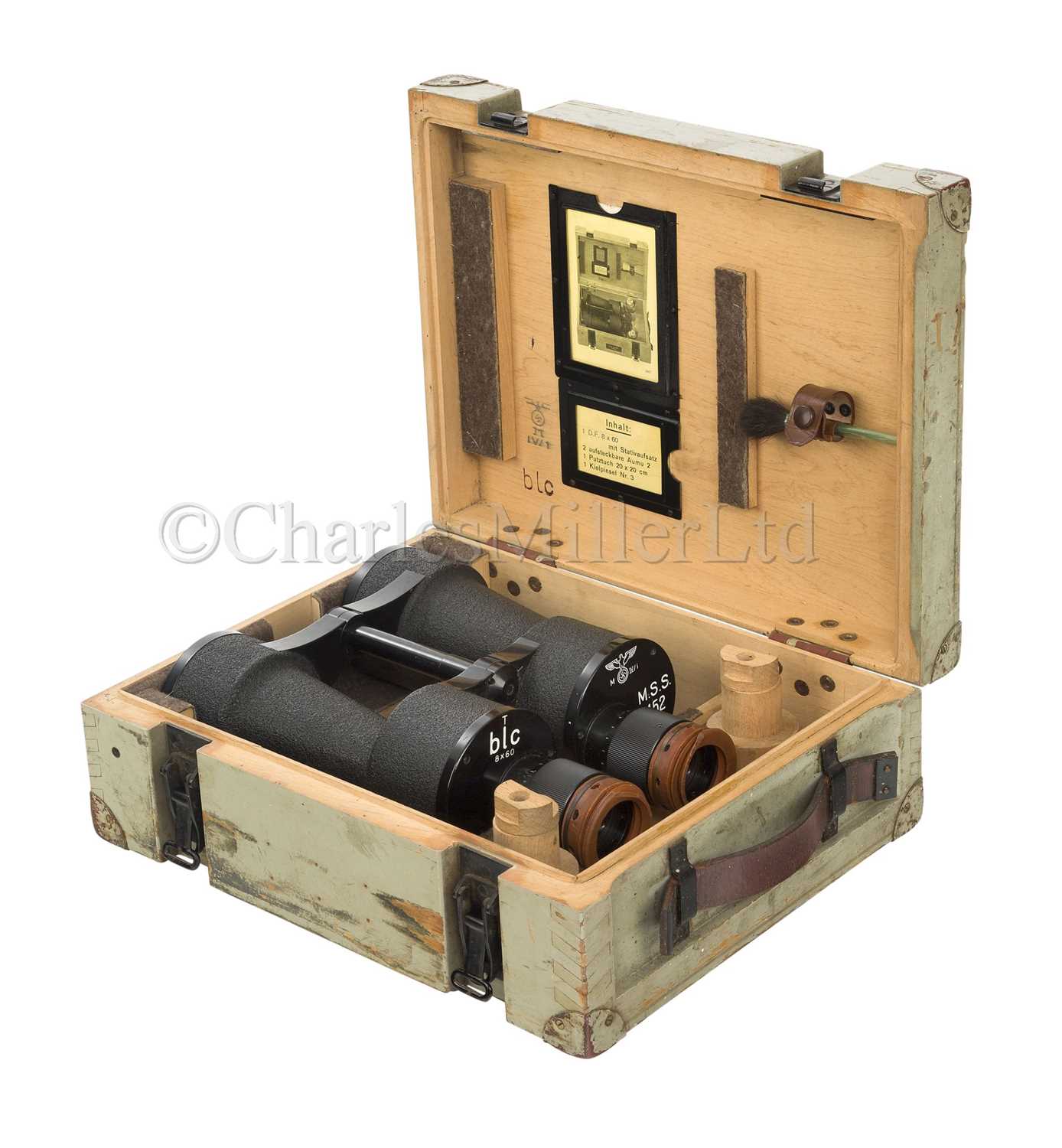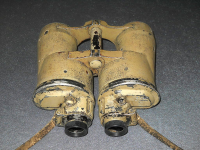8x60?
Regards,
B.

Lot 139 - A FINE, POSSIBLY UNISSUED, PAIR OF 8 X 60
Lot 139 - A FINE, POSSIBLY UNISSUED, PAIR OF 8 X 60 - Estimate 4000-6000 GBP
8x60?
Regards,
B.

Wow!
Lot 139 - A FINE, POSSIBLY UNISSUED, PAIR OF 8 X 60
Lot 139 - A FINE, POSSIBLY UNISSUED, PAIR OF 8 X 60 - Estimate 4000-6000 GBPwww.charlesmillerltd.com
OrderedVS007,
Try the Swarovski Habicht 7x42: brilliant optical performance, magnification allright for marine use, waterproof and a joy to use.
Gijs van Ginkel
Replacement eyecups may be scarce, and I don't see the cleaning cloth, which probably belonged in the loop with the brush.
Lot 139 - A FINE, POSSIBLY UNISSUED, PAIR OF 8 X 60
Lot 139 - A FINE, POSSIBLY UNISSUED, PAIR OF 8 X 60 - Estimate 4000-6000 GBPwww.charlesmillerltd.com

Those 8x60 are known as "Commanders Glasses", or "Tall Ones"8x60?
Regards,
B.

Weight of the WW2 8x60 is about 2200 grams, where the 7x50 that I posted is about 1750 grams.Replacement eyecups may be scarce, and I don't see the cleaning cloth, which probably belonged in the loop with the brush.
How much did one of these weigh?



150 meters"The fact that the 7x50 Zeiss goes down to 150 metres is not useful to humans. Perhaps a deep diving marine creature might benefit.
As to increased depth of field, that is not optically correct, unless the field is curved
An 8x60 with a 7.5mm exit pupil makes it easier to get a full view, and young people can easily reach 7.5mm eye pupil.
The Ross 10x80 are probably much heavier than the Zeiss 8x60 and have an 8mm exit pupil."
Regards,
B.
I have sold dozens of Fujinon marine binoculars and been inside many more. Thus, for me, the cream of the crop is the FMTR-SX. I have written articles on many fine choices FOR DAY SAILORS. However, every square inch of objective lens gathers the light of nine eyes wide open! Thus, if you are out on the BIG WATER at night—or in any number of low light or atmospheric conditions—so many of the choices presented above will lose their beauty and convenience to practicality.
And as to the Zeiss 7x50 being the best marine binocular ever made: I would point out that while today's binoculars are designed in a few hours with a computer, that product was designed in weeks and took several pencils and a few reams of paper.
The attachments show a cutaway I did (the red dots represent O-rings) ... boy that hurt, desiccant tablets, and the prism fixture showing the prism shield and the adjustable field stop.
Cheers, Bill
"Optically correct" probably means "collimated." As for curved field, please note my sales tool from Captain's Nautical.150 meters
I merely mentioned that to illustrate that these were completely waterproof.
(I was not suggesting that anyone take them to 150 meters depth to find out)
Depth of field:
I have my 7x50 "Fat Boys" focused to read script at a distance of 150-200 meters, and when viewing stars in the sky, they appear correctly.
(unsure about "optically correct" or "curved field", but the view is crystal clear at any distance)
Ross:
I have a pair of 10x70, the weight is 3.5kg, and the exit pupil is 7 degrees, FOV - 92 m/1000m
(nice binoculars, but much too heavy to hand-hold.
,

. . . . "probably means" ?? " . . . . YES, they are accurately and correctly collimated."Optically correct" probably means "collimated." As for curved field, please note my sales tool from Captain's Nautical.
Perhaps you could inform us which modern binoculars you have compared the 8x60 to, under what circumstances, and provide some of your observations as to why they "surpass anything currently available"?But the low-light view and depth of field still surpasses anything currently available.

Please permit to address your questions:Probably artistic licence.
The depth of field comment is probably not accurate but a feeling.
The low light level might be close to reality if a coated example.
The actual binocular probably cost more to make than any currently made consumer binocular.
Personally, I have no desire for such an 8x60 binocular or to haul around an 8x56 in daylight.
But some like to do this.
As to values.
There is new. Never been sold.
As new, similar but maybe missing paperwork or boxes.
Mint. No marks or sign of use.
Mint minus. minimal signs of use.
Excellent. Self explanatory.
Good. the same.
Used. Signs of considerable use.
Well used. Pretty poor cosmetically, but should work properly optically.
Faulty. Needs a professional overhaul.
Parts only. Not commercially fixable.
The 8x60 is probably Used.
Regards,
B.

I have had the opportunity to do a side-by-side comparison (at night) with a few other binoculars:Perhaps you could inform us which modern binoculars you have compared the 8x60 to, under what circumstances, and provide some of your observations as to why they "surpass anything currently available"?
